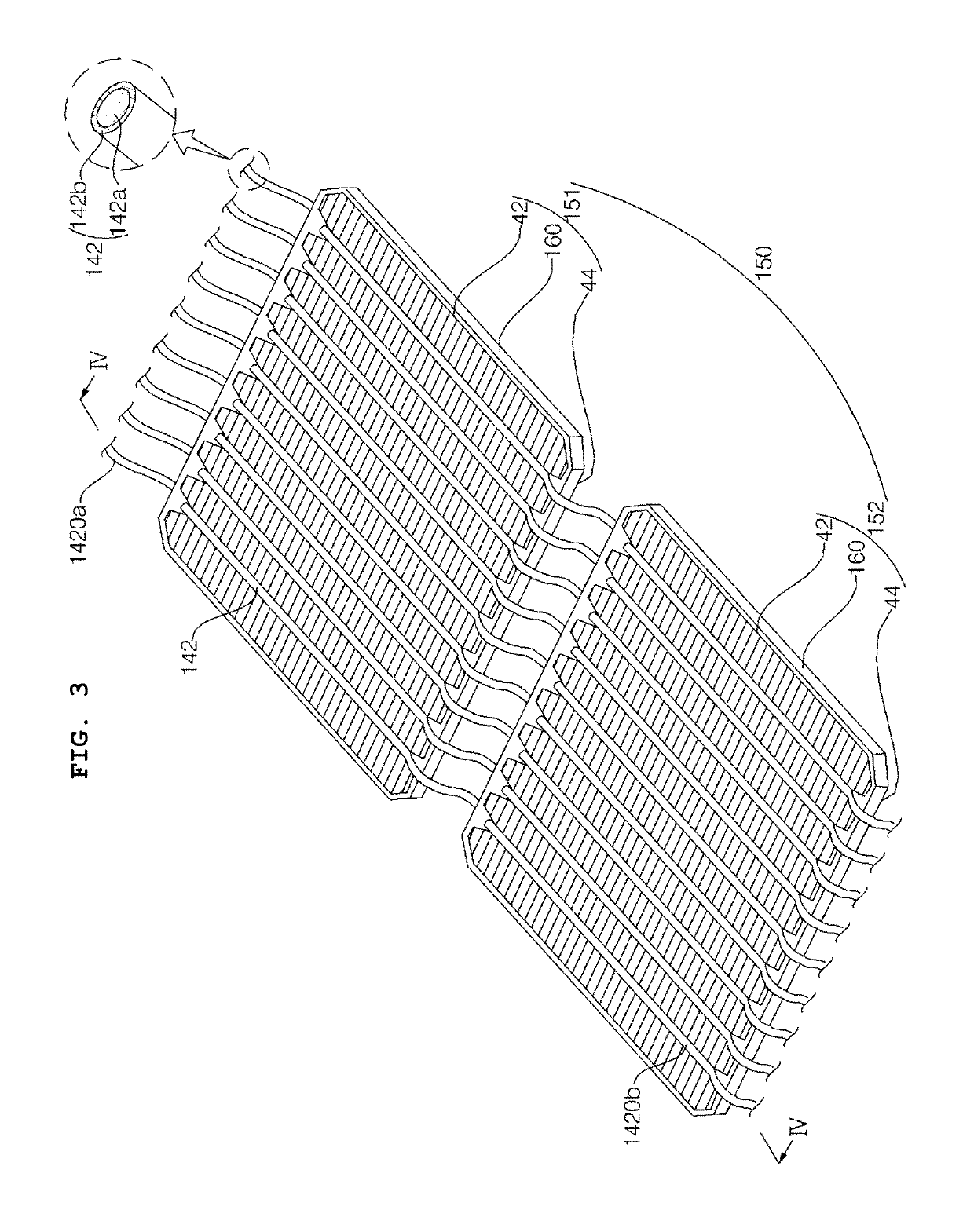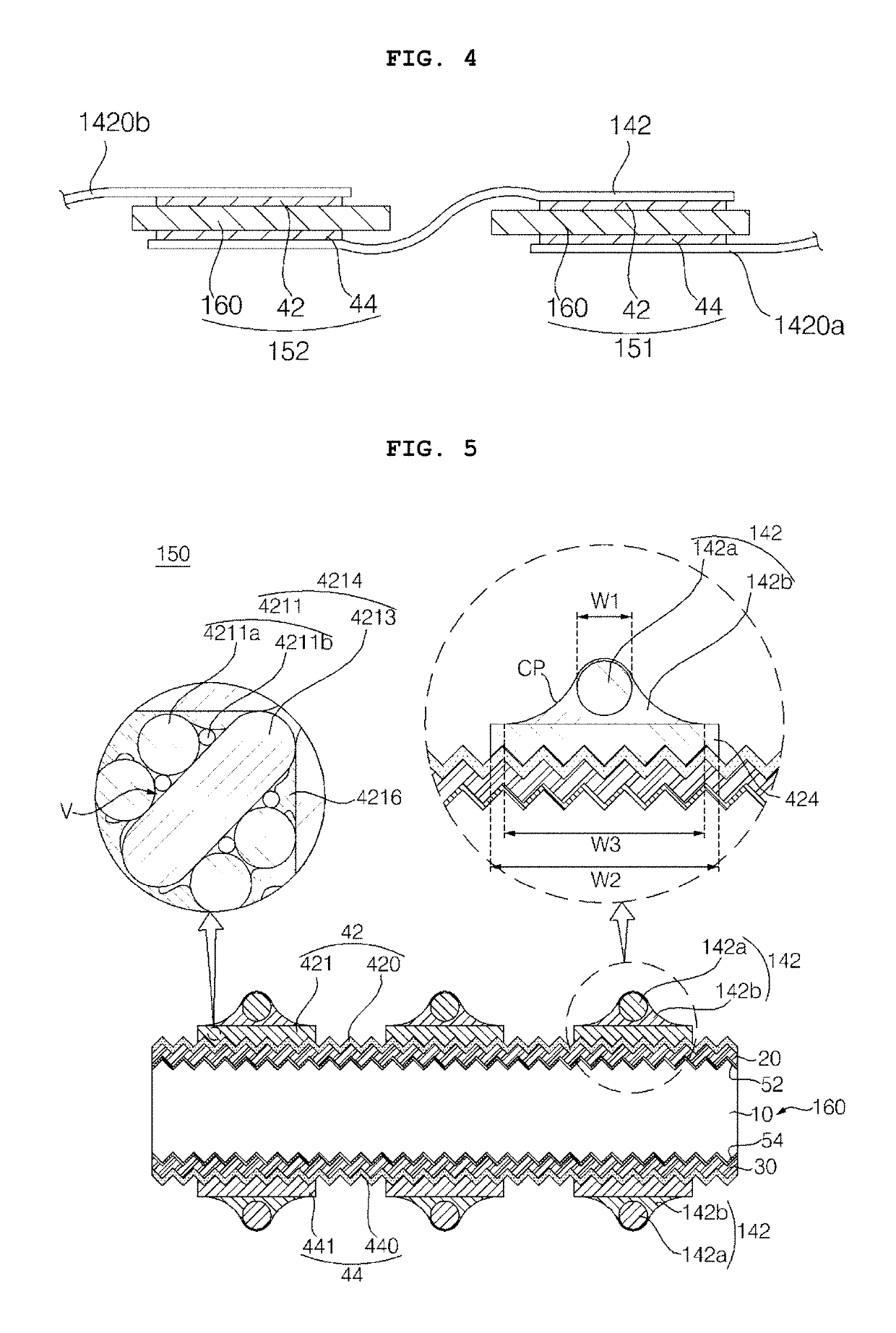Solar cell panel
a solar cell and panel technology, applied in the field can solve the problems of reducing the output power reducing the efficiency of solar cell panels, and reducing the cost of conductive adhesive films, so as to reduce the movement path of carriers, improve the output of solar cell panels, and reduce the effect of a small width
- Summary
- Abstract
- Description
- Claims
- Application Information
AI Technical Summary
Benefits of technology
Problems solved by technology
Method used
Image
Examples
experimental example 1
[0148]A metal electrode layer was formed by coating a low-temperature paste and heat-treating the same. The low-temperature paste included metal particles, a cross-linking resin, a hardener, and a solvent. The metal particles included spherical-shaped particles having a size of 0.1 to 5 um, and flake-shaped particles having a long width of 2 to 10 um and a thickness of 0.2 to 5 um. In this instance, the spherical-shaped particles were included by 80 parts by weight and the flake-shaped particles were included by 20 parts by weight with respect to 100 parts by weight of the metal particles. The cross-linking resin was an epoxy-based resin, the hardener was an amine-based hardener, and the solvent was butyl carbitol acetate. With respect to 100 parts by weight of a sum of the metal particles and the cross-linking resin, the metal particles were included by 80 parts by weight, the cross-linking resin was included by 20 parts by weight, and the hardener was included 2 parts by weight, t...
experimental example 2
[0150]Pull strength was measured by the method same as the method in Experimental Example 1 except that the lead including a second solder layer of SnBi instead of the first solder layer was attached by the tabbing process.
experimental example 3
[0151]Pull strength was measured by the method same as the method in Experimental Example 1 except that the lead including a third solder layer of SnIn instead of the first solder layer was attached by the tabbing process.
PUM
 Login to View More
Login to View More Abstract
Description
Claims
Application Information
 Login to View More
Login to View More - R&D
- Intellectual Property
- Life Sciences
- Materials
- Tech Scout
- Unparalleled Data Quality
- Higher Quality Content
- 60% Fewer Hallucinations
Browse by: Latest US Patents, China's latest patents, Technical Efficacy Thesaurus, Application Domain, Technology Topic, Popular Technical Reports.
© 2025 PatSnap. All rights reserved.Legal|Privacy policy|Modern Slavery Act Transparency Statement|Sitemap|About US| Contact US: help@patsnap.com



